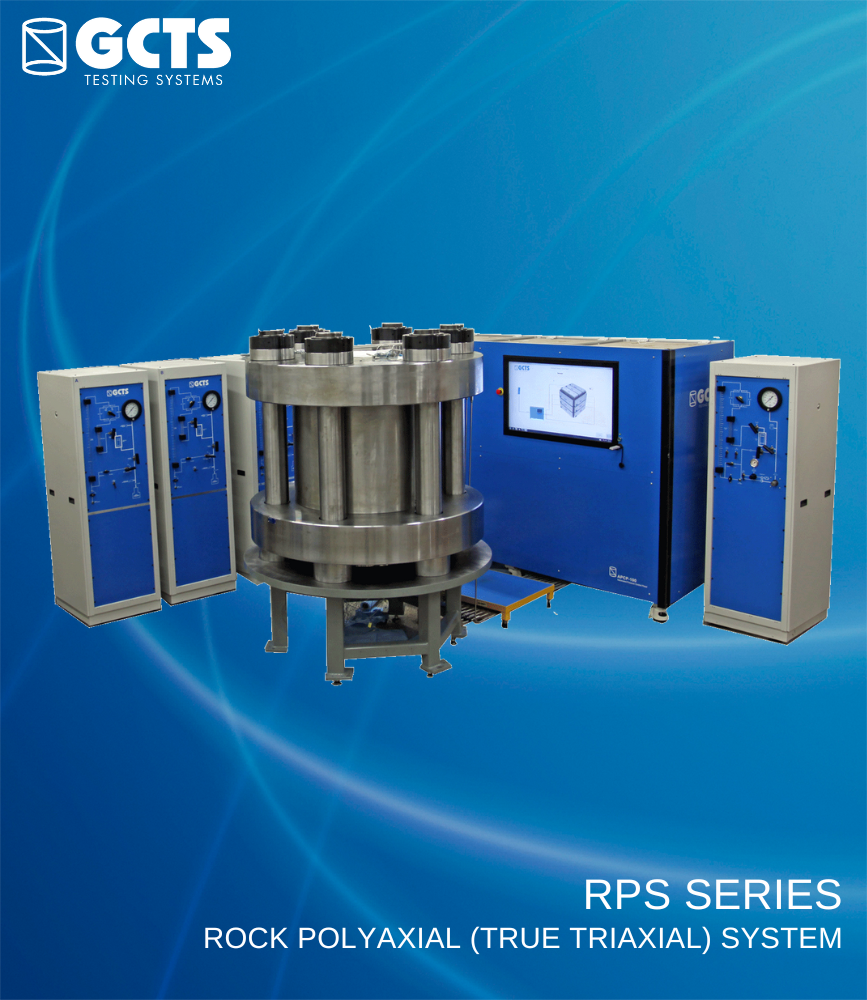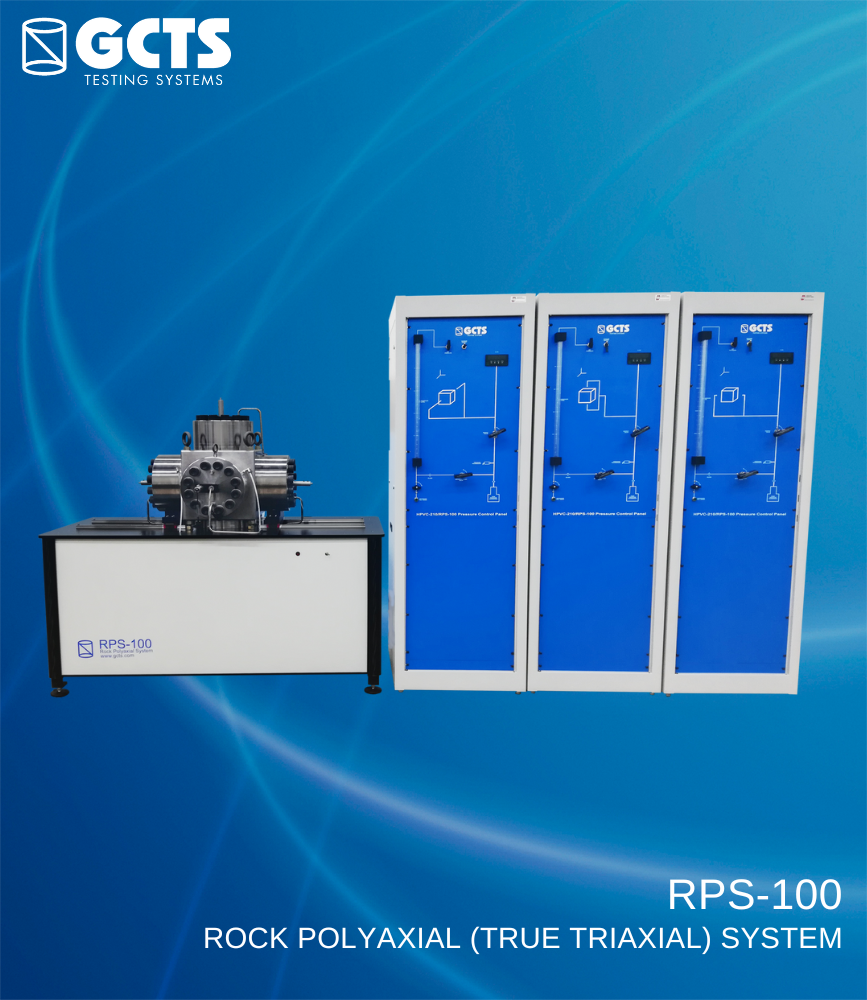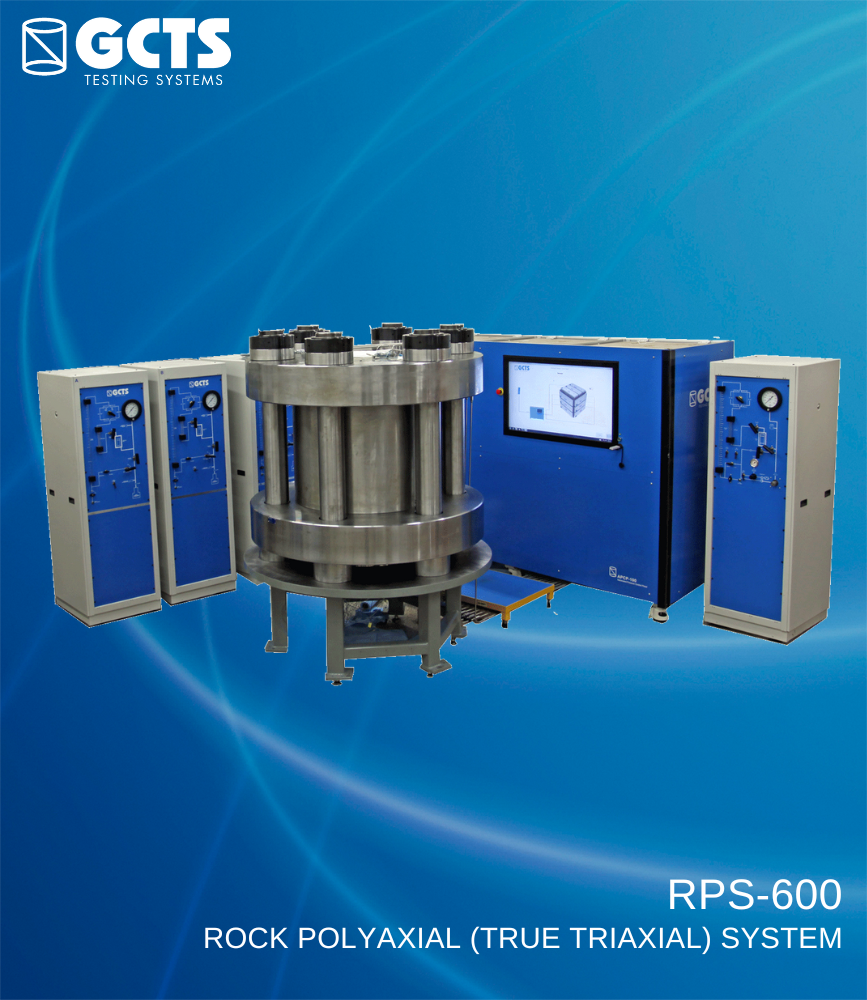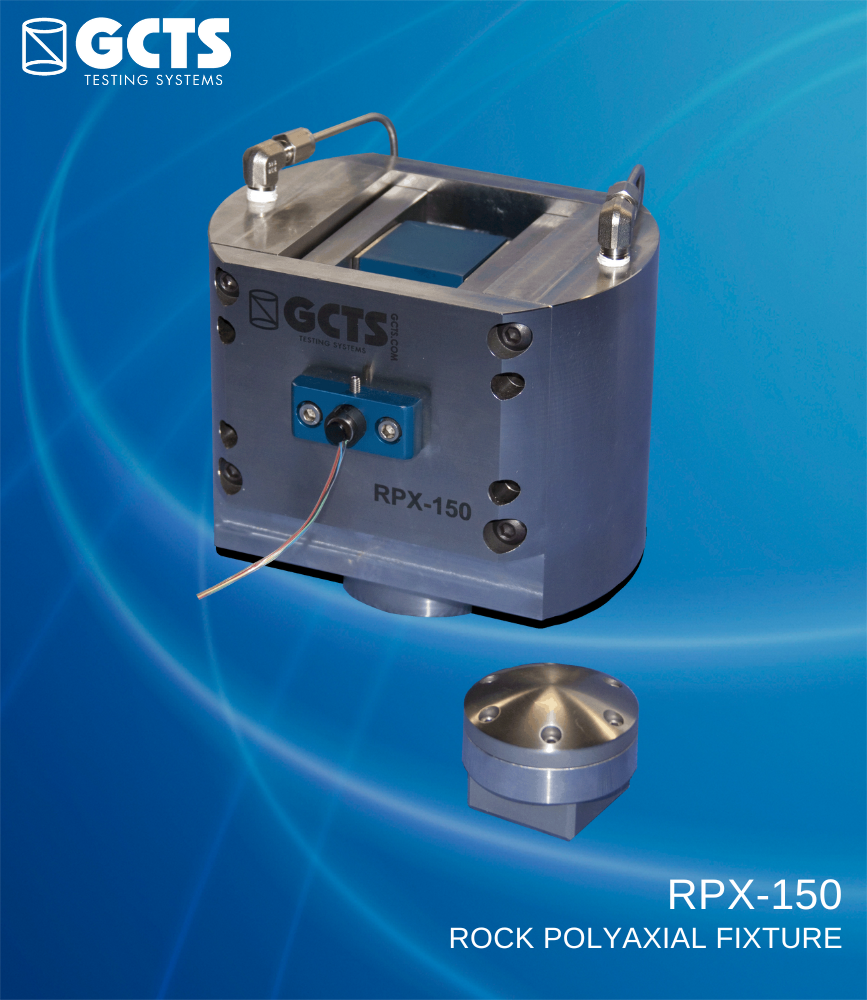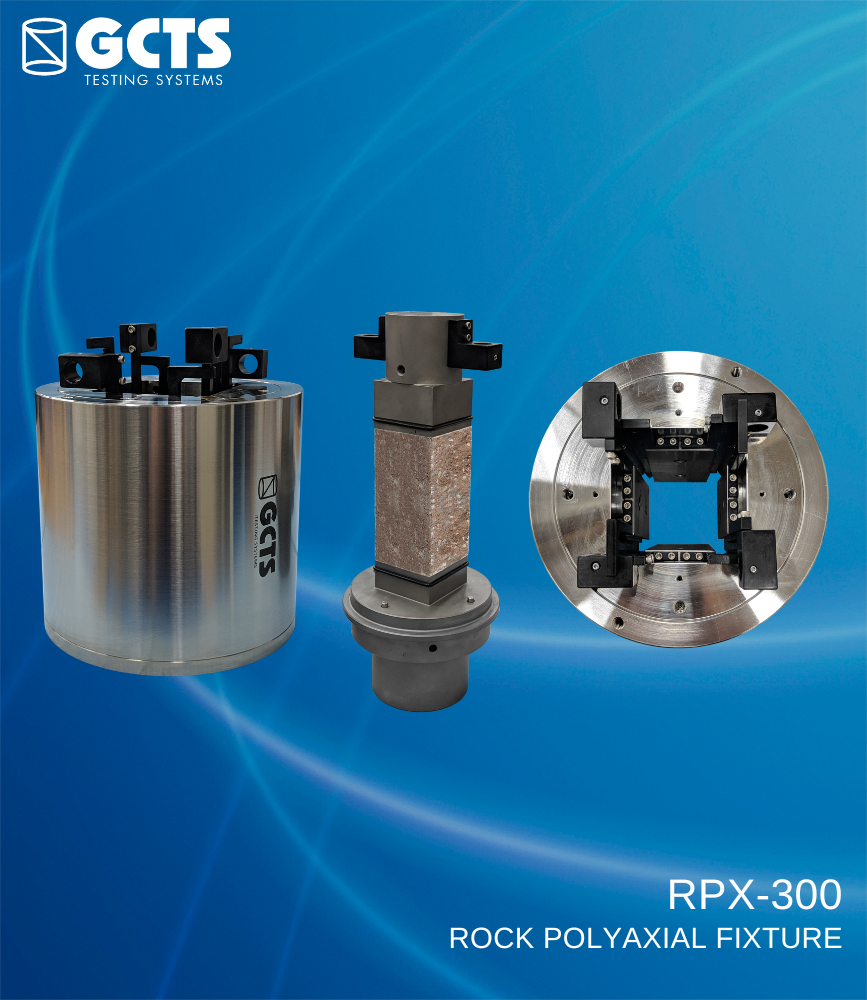Rock True Triaxial (Polyaxial)
GCTS offers a variety of equipment to perform true triaxial (polyaxial) tests on prismatic specimens.
The RPS-100 and RPS-600 True Triaxial Testing Systems provide complete solutions for true triaxial testing. These systems can be used to study the intermediate principal stress effect on rock engineering behavior and adequately describe the strength of a rock under a general system of polyaxial compressive stresses. They are designed to apply three independent stresses (σ₁, σ₂ and σ₃) onto a cubical test specimen by utilizing hydraulic intensifiers to apply pressure to solid platens that are in direct contact with the specimen. Both systems can be upgraded with pore pressure control, temperature control, and ultrasonic velocity sensors for P and S wave measurements. In addition, both systems can be upgraded with hydraulic fracturing platens to approximate the effects of anisotropic stress state on borehole stability. The RPS-100 is designed for cubical specimens with sides up to 100 mm and the RPS-600 is designed for cubical specimens with sides up to 300 mm (with an upgrade available for specimens up to 600 mm tall).
The RPX-150 and RPX-300 True Triaxial Fixtures are designed to be used within standard GCTS triaxial cells to perform true triaxial tests on smaller-sized specimens. These fixtures function similar to the RPS Systems, with hydraulic intensifiers controlling the loading platens that are directly in contact with the specimens. Both fixtures can be used in high-temperature environments and can be upgraded with hydraulic fracturing platens and ultrasonic velocity sensors. The RPX-150 is designed for 38 mm by 38 mm by 76 mm tall specimens and utilizes the confining pressure to apply σ₃ (with the loading jacks applying σ₂). The RPX-300 is designed for 50 mm by 50 mm by 100 mm tall specimens and utilizes loading jacks to apply σ₂ and σ₃ to the specimen. Both systems utilize a load frame’s axial actuator to apply σ₁.
RPS-100
SYSTEM HIGHLIGHTS
- Test cubical 100 mm by 100 mm by 100 mm rock specimens
- Independent control of σ₁, σ₂, σ₃ (where σ₁≠σ₂≠σ₃) or ε₁, ε₂, ε₃ or a combination of stress or strain control for each axis
- Measures strains in all three orthogonal directions
- Maximum major principal stress 140 MPa
- Optional pore pressure control up to 140 MPa
- Optional ultrasonic sensors to measure P and S wave velocities under different stress states
- Optional hydraulic fracturing platens available to perform wellbore stability tests.
- Optional temperature control up to 150 °C
RPS-200
SYSTEM HIGHLIGHTS
- Test cubical 200 mm x 200 mm x 200 mm (8″ x 8″ x 8″) rock specimens
- Independent control of σ₁, σ₂, σ₃ (where σ₁≠σ₂≠σ₃) or ε₁, ε₂, ε₃ or a combination of stress or strain control for each axis
- Measures strains in all three orthogonal directions
- Maximum major principal stress 100 MPa
- Optional pore pressure control up to 100 MPa
- Optional ultrasonic sensors to measure P and S wave velocities under different stress states
- Optional hydraulic fracturing platens available to perform wellbore stability tests.
- Optional temperature control up to 200 °C
RPS-600
SYSTEM HIGHLIGHTS
- Test cubical 300 mm by 300 mm by 300 mm rock specimens
- Independent control of σ₁, σ₂, σ₃ (where σ₁≠σ₂≠σ₃) or ε₁, ε₂, ε₃ or a combination of stress or strain control for each axis
- Measures strains in all three orthogonal directions
- Maximum major principal stress 100 MPa
- Pore pressure control up to 100 MPa
- Three loading plates on each specimen face
- Optional ultrasonic sensors to measure P and S wave velocities under different stress states
- Optional acoustic emission measurement system
- Optional hydraulic fracturing platens available to perform wellbore stability tests.
- Optional temperature control up to 200° C
- Optional upgrade for 600 mm tall specimens
- Optional gradient stress control
RPX-150
FIXTURE HIGHLIGHTS
- Stainless steel construction
- Perform poly-axial (true triaxial) tests within a GCTS rock triaxial cell
- Accommodates cubical or cylindrical rock specimens with maximum dimensions of 38 mm by 38 mm by 76 mm or 38 mm diameter by 76 mm height
- Independent control of σ₁, σ₂, σ₃ (where σ₁≠σ₂≠σ₃) or ε₁, ε₂, ε₃ or a combination of stress or strain control for each axis
- Measures strains in all three orthogonal directions
- Stress control up to 70 MPa
- Available ultrasonic sensors to measure P and S wave velocities under different stress states
- Optional hydraulic fracturing platens available to perform wellbore stability tests
- Customized fixtures available to fit existing triaxial cells
RPX-300
FIXTURE HIGHLIGHTS
- Stainless steel construction
- Perform poly-axial (true triaxial) tests within a GCTS rock triaxial cell
- Accommodates cubical samples with maximum dimensions of 50.8 mm x 50.8 mm x 101.6 mm
- Independent control of σ₁, σ₂, σ₃ (where σ₁≠σ₂≠σ₃) or ε₁, ε₂, ε₃ or a combination of stress or strain control for each axis.
- Measures strains in all three orthogonal directions
- Stress control up to 70 MPa
- Available ultrasonic sensors to measure P and S wave velocities under different stress states
- Available ultrasonic sensors to measure P and S wave velocities under different stress states
- Optional hydraulic fracturing platens available to perform wellbore stability tests
- Customized fixtures available to fit existing triaxial cells

